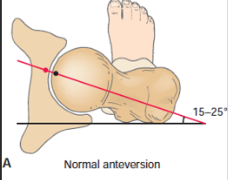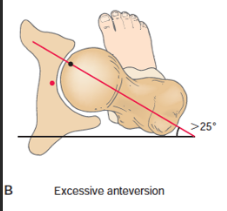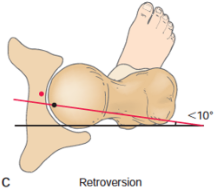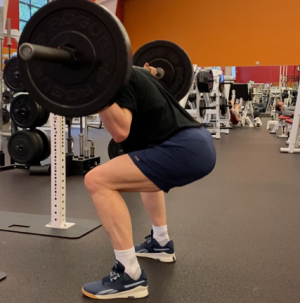A lot of duck footed walking seems to come from the hips, or maybe it’s a chicken and egg thing.
That's it.
There's femoral retroversion and anteversion. This has to do
with how the head of the femur is formed, and that shapes the
way the femur inserts into the pelvis/acetabulum/hip joint.
Anteversion or retroversion determines many things happening
down below the hip joint.
Anteversion means you can sit in the W position (or could as
a child when you were limber) but not cross-legged, and it
means you tend to sit on the lift with ski tips diverted.
A-framing accompanies anteversion. People with anteverted
hips have an easier time skiing in a wedge.
The image on the right above shows femoral anteversion.
The one on the right shows retroversion. The image below
shows what the effects at the foot are.
Anteversion is also associated with excessive pronation.
To test for anteversion, you can do a Craig test.
Confirmation rests on degree of rotation shown below.
Femoral anteversion is far less common than retroversion.
And then there's "normal" which I suppose is most common.
Boston Children's Hospital:
Femoral anteversion occurs in up to 10 percent of children.
The condition is somewhat more common in girls than boys.
It often, but not always, affects both legs.






